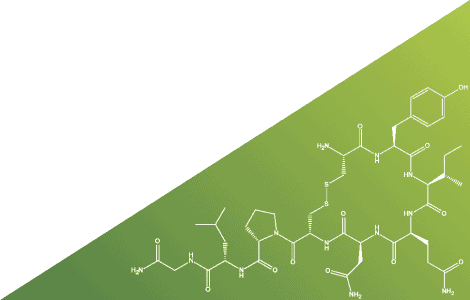What Is Trypsin Enzyme? Definition, Functions, Benefits, and Risks


Trypsin is a proteolytic enzyme that breaks protein into smaller peptides and amino acids. In plain terms, it helps finish the job that stomach acid starts, so the body can absorb building blocks for muscle, hormones, and energy. If the question is, “What is Trypsin Enzyme,” the short answer is this: it is a serine protease, a protein cutter produced in the pancreas (where is trypsin produced) and released into the small intestine, that targets peptide bonds after lysine and arginine. In this guide, readers will learn what trypsin is, how it works, where it helps beyond digestion, the key benefits and risks, how it is used in medicine and industry, and what current research is finding. It is written for students, health fans, and anyone curious about enzymes and digestive health.

Photo by MART PRODUCTION
Trypsin Mechanism: How Trypsin Works From Activation to Protein Digestion
Trypsin is a digestive enzyme made by the pancreas. It is a protease, which means it cuts proteins at precise spots through a hydrolysis reaction. The pancreas first makes it as trypsinogen, an inactive form called a zymogen. This protects the pancreas from self-digestion. When trypsinogen reaches the small intestine, an enzyme on the intestinal lining called enterokinase (also known as entero peptidase) activates it by cleaving a short segment. This activation highlights the key difference in trypsin vs trypsinogen: one is ready to digest while the other remains dormant. Active trypsin then starts cutting proteins after the amino acids lysine and arginine. Mechanistically, think of trypsin like scissors with a preference. It targets specific junctions in protein chains, which helps create predictable peptide fragments. This precision helps the body absorb amino acids faster. Trypsin also activates other pancreatic enzymes, including chymotrypsin, which cuts at different amino acids, mainly those with bulky, aromatic rings. They work as a team. Pepsin in the stomach starts the breakdown, and trypsin in the small intestine finishes the heavy lifting for absorption. Diagram idea, if visualizing the process:
- Pancreas releases trypsinogen.
- Enterokinase in the small intestine activates trypsinogen to trypsin.
- Trypsin cuts proteins at lysine and arginine, and it activates other proteases.
Real-world example: after a protein-rich meal, like eggs or fish, pepsin in the stomach loosens up the proteins. Once food moves to the small intestine, trypsin takes over to create absorbable pieces the gut can transport into the blood.
The Role of Trypsin in Everyday Digestion
Trypsin supports daily nutrition by breaking dietary protein into units the body can use to build and repair tissues. It also helps by activating other enzymes, such as chymotrypsin and elastase, which broadens the range of sites that get cut. Example: picture eating a steak. Pepsin begins the process in the stomach. In the small intestine, trypsin slices at lysine and arginine, then others take complementary cuts. The result is a mix of peptides ready for absorption into amino acids. Step Enzyme Where it acts What it targets Out come
- Pepsin Stomach Peptide bonds, broad preference Partially digested protein
- Trypsin Small intestine After lysine and arginine Short peptides and amino acids
- Small intestine After bulky aromatic residues Complementary peptide fragments
Beyond Digestion: Trypsin’s Impact on Immunity and Inflammation
This enzyme can signal to the immune system by engaging protease-activated receptors (PARs), especially PAR2. This can shape local tissue responses. It also interfaces with kallikrein-kinin pathways that influence vascular tone and fluid movement, which can affect swelling and blood pressure. Example: during injury recovery, controlled protease activity helps clear damaged proteins and can support tissue repair. Targeted use in therapy aims to reduce excess swelling and speed the return to function.
Unlocking the Benefits: Health and Practical ‘Trypsin uses’
Trypsin shows benefits in digestion and, when combined with chymotrypsin, in recovery care. In clinical and lab contexts, it plays roles that extend far beyond the gut. Health and clinical benefits:
- Better digestion: supports protein breakdown, which may ease bloating and gas in some cases.
- Inflammation support: combinations like trypsin-chymotrypsin have been studied for pain and swelling after injury, including enzyme blends to support conditions like osteoarthritis. See a review on enzyme therapy for tissue repair in the medical literature at The Role of Trypsin:Chymotrypsin in Tissue Repair (PubMed) and the open-access version on PMC.
- Wound care: low-dose trypsin has shown promise in accelerating wound healing in preclinical work, with fewer side effects than some standard treatments, as reported in this 2023 study on PMC.
Industrial and research applications:
- Food processing: meat tenderization and production of hypoallergenic formulas by reducing allergenic proteins.
- Cell culture labs: detaching cells from culture dishes for passaging and analysis.
- Diagnostics and oncology research: probing protease activity, signaling pathways, and tumor microenvironments. These highlight key Trypsin applications in biotech.
Top benefits at a glance:
- Better protein digestion and nutrient absorption
- Support for post-exercise recovery when paired with chymotrypsin
- Helpful tool in labs, clinics, and food technology
Trypsin Supplements: Do They Really Help Your Gut and Recovery?
Some digestive formulas include trypsin, often with chymotrypsin or bromelain. Many users try these supplements to ease heavy-meal discomfort or for post-exercise recovery. Evidence suggests that protease enzyme blends can reduce swelling and pain after minor injuries, though results vary. Practical tip for health enthusiasts: if meals with lots of protein leave you bloated, a protease blend may help. Start low, track your response, and discuss with a clinician if you have any medical condition or take blood thinners.
Trypsin in Medicine and Industry: Real-World Innovations
Diagnostics use it in assays that measure pancreatic output or trypsin enzyme activity. Wound care products sometimes include low-dose proteases to clean tissue and support wound healing. Food technologists apply it to improve texture and digestibility, and labs depend on it to release cells for analysis, showcasing trypsin applications in biotech. A short history: it was identified in the late 1800s during early protein digestion studies. Structural work in the 20th century clarified its active site and specificity, which paved the way for modern applications in biochemistry and biotechnology.
What Are the Risks? Understanding Trypsin’s Potential Downsides
Uncontrolled trypsin enzyme activity inside the pancreas can damage tissue and contribute to pancreatitis. The story is evolving. A 2024 review suggests Trypsin may act more as a mediator than the sole culprit in disease pathways, which shifts how researchers see its role in pancreatic injury. See the overview at Trypsin in pancreatitis: The culprit, a mediator. Elevated intracellular levels can still worsen injury in models, as shown in a mouse study on PubMed. Supplements can cause mild digestive upset, and allergic reactions are rare but possible. People with pancreatic diseases like cystic fibrosis, bleeding risks, or who are pregnant or nursing should consult a clinician. Table: weighing risks and benefits Aspect Potential benefit Potential risk DigestionLess bloating, better protein use Nausea or cramps in some users Recovery Reduced swelling and painInteraction with medications Wound care Faster cleaning and healing Irritation if used improperly Pancreatic health Diagnostic insights Overactivation can harm tissue
The Story of Trypsin: History, Latest Research, and Key Takeaways
Trypsin’s arc runs from 19th-century discovery to protein chemistry work that mapped its specificity. Modern research explores its roles in inflammation, cancer biology, and neurodegeneration. PAR2 signaling, targeted inhibitors, and low-dose topical strategies are active areas of study. For context on tissue repair and enzyme therapy, see the review on PMC. Key takeaways:
- Trypsin is a zymogen-activated proteolytic enzyme that safely digests proteins in the small intestine.
- It supports digestion, recovery care, and several industry workflows.
- Balance matters. Too much or misdirected activity can damage tissue.
- Research is refining how to harness benefits, while reducing risks.
Cutting-Edge Studies: What’s New in Trypsin Research
Current work examines how trypsin-PAR2 signaling affects inflammation, immunity, pain, and vascular responses. In pancreas research, scientists track where and when trypsin enzyme activity occurs inside cells, then test inhibitors that limit harm without blocking normal digestion. Wound-healing studies assess low-dose topical use to clean tissue and promote tissue repair while avoiding irritation, as reported in the 2023 study on low-dose trypsin and wound healing.
Frequently Asked Questions About Trypsin Enzyme
- What foods contain trypsin?
Foods do not contain active trypsin for human digestion. The body produces trypsin in the pancreas and activates it in the small intestine. - Can someone take trypsin supplements daily?
Many products are designed for short-term digestive support or recovery. Daily use of trypsin supplements should be guided by a clinician, especially if there are medical conditions or medications. - How does trypsin differ from other enzymes?
Trypsin targets peptide bonds after lysine and arginine, distinguishing it from trypsin vs trypsinogen, where trypsinogen is the inactive precursor form. Chymotrypsin favors bulky aromatic residues. Pepsin works in the acidic stomach and has broader targets. - What is the link to pancreatic diseases?
Inappropriate activation of trypsin inside the pancreas can harm tissue. Reviews suggest trypsin is a mediator of some pancreatitis responses, not the sole cause, based on newer data, and it relates to pancreatic dysfunction in conditions like cystic fibrosis. - Does trypsin help with sports recovery?
Some evidence supports protease blends, including trypsin and chymotrypsin, for reducing swelling and discomfort after minor injuries, with potential benefits extending to chronic inflammation in conditions like osteoarthritis. - Is topical trypsin safe for wounds?
Low-dose approaches are under study. Data suggest potential benefits for cleaning and wound healing, but use should follow medical guidance.
Conclusion
Trypsin is a precise digestive enzyme that turns protein into absorbable pieces. It supports daily nutrition, may aid recovery when used in blends, and powers real work in medicine and industry. Trypsin highlights its versatility in these areas, with benefits that are clear, yet control is key, since misdirected activity can harm tissue. For supplement use or wound care, consult a qualified professional. Curious to explore related enzymes and their roles in health and research? Keep learning and, when in doubt, ask a clinician to tailor advice to personal needs.

